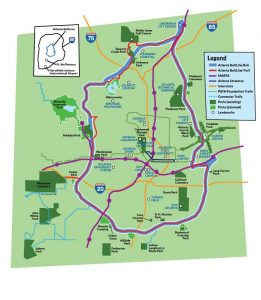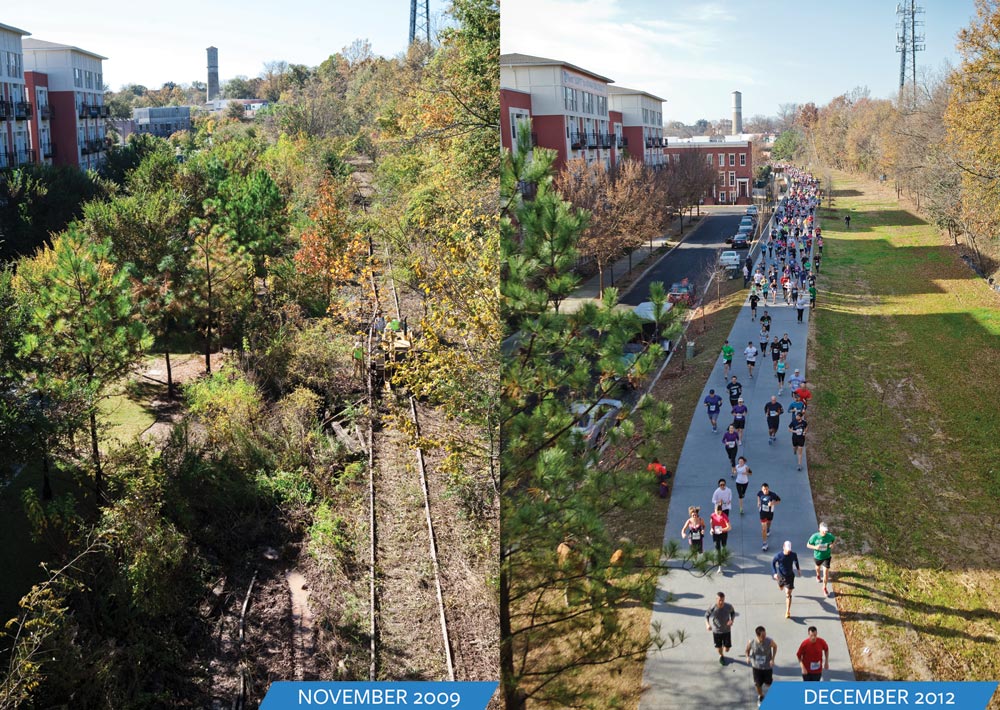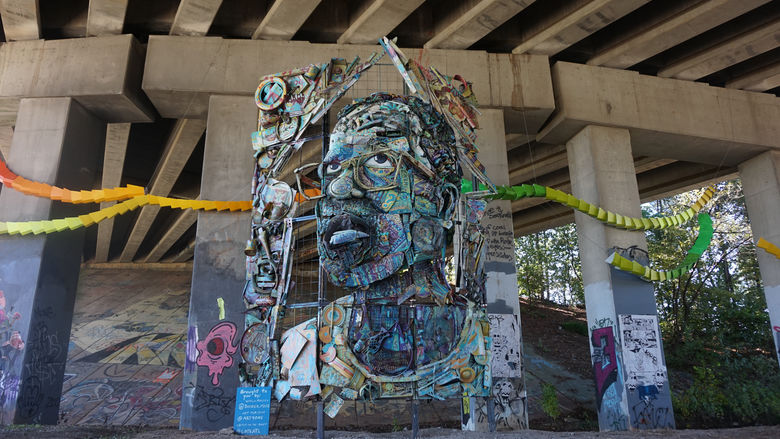City: Atlanta
Country / US State / US Territory: Georgia
Type of Solution: Railways
Climate Impact: Extreme Temperatures and Urban Heat Island Effect; Air Quality; Extreme Precipitation and Flooding
Social Value Created: Diverse Transportation; Connectivity; Water Security and Quality; Active Living and Playspaces

Greenspace improves air quality and contributes to urban cooling, counteracting extreme temperatures and the urban heat island effect. Additionally, the green infrastructure slows and captures stormwater during heavy rain events, presenting flooding.
The BeltLine project also creates social value for the community. The BeltLine project increases diversity of transportation and improves connectivity between 45 neighborhoods of varying socioeconomic statuses and ethnicities. The greenspace will also help to filter water, improving water quality. Another unique feature of the BeltLine project is an outdoor public art-exhibit, displaying the work of more than 70 artists over the course of 9 miles of the BeltLine, contributing to the city’s arts and culture.


Sources: Historic Fourth Ward Park Conservancy. (n.d.). Clear Creek Basin. Retrieved from http://www.h4wpc.org/clear-creek-basin/.
The Adaptation Clearinghouse. (n.d.). Case study of the Atlanta BeltLine – adaptation aspects. Retrieved from http://www.adaptationclearinghouse.org/resources/case-study-of-the-atlanta-beltline-adaptation-aspects.html.
WhereTraveler. (n.d.). Art on the beltline. Retrieved from https://www.wheretraveler.com/atlanta/art-beltline.

